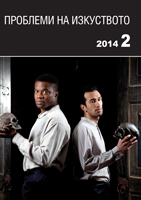Укротяване на публиката
The Taming of the Audience
Author(s): Evgenia PanchevaSubject(s): Cultural history
Published by: Институт за изследване на изкуствата, Българска академия на науките
Summary/Abstract: The paper discusses Shakespeare‘s early comedy of The Taming of the Shrew (c.1590-91) as a metatheatrical game with the audience. To contextualise the drama’s insciption of the observer, it traces the dynamics of pre-Shakespearean exchanges with the spectators - from Mystery plays (Secunda Pastorum) through Moralities (Mankind) to humanist interludes (Fulgens and Lucrece). It also makes references to Elizabethan theatrical conventions, conditions of presentation, including audience status and theatre design, as well as transactions with the audience in the plays of Shakespeare’s contemporaries. The paper argues that the Induction to Shakespeare’s play stages the audience’s gradual involvement in the theatrical fiction. As a Sidneyan golden world is organised around him, the drunken tinker Christopher Sly, our double upon the stage, watching a theatrical performance, is tricked into believing himself to be „a lord, and nothing but a lord”. Sly’s complete surrender to theatrical illusionism, however, results in his disappearance from the Shakespearean text. Within the play proper, the gross fictions of the embedded Taming violently school the noisy, unruly Catherine into obedience. Its poetics depends upon the tamer Petruchio’s oscillation between illusion-making and illusion-breaking. As exemplified by the ending, this selfinterrupting illusionism functions as a fine counterpoint to the theatrics of the Induction, and a metatheatrical reply to the Puritan attacks against the early modern stage.
Journal: Проблеми на изкуството
- Issue Year: 2014
- Issue No: 2
- Page Range: 18-22
- Page Count: 5
- Language: Bulgarian
- Content File-PDF

